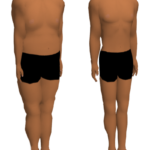Professors adapt teaching methods to accommodate students’ sensitivities towards human remains
- Professors are using trigger warnings and alternative teaching methods to accommodate students who may be sensitive to human remains in archaeology and anthropology classes.
- Some professors use drawings or plastic skeletons instead of real bones to teach their students.
- There is a larger ethical discussion surrounding the collection and display of human remains by researchers, explorers, and museum leaders.
- Museums are taking steps to be more sensitive to cultural and personal sensitivities, such as holding focus groups and renaming exhibits.
- The use of trigger warnings and alternative teaching methods is becoming more common in the field of archaeology and anthropology.
Professors in the field of archaeology and anthropology are facing new challenges in teaching their students due to heightened personal and cultural sensitivity. In an effort to accommodate students who may be sensitive to human remains, some professors are using trigger warnings and alternative teaching methods.nnOne professor, Jason Ur from Harvard University, used to bring a human skull to class to get his students excited about the subject. However, he now plans to give a trigger warning to his students before showing any human remains, stating that if they are troubled by it, the class may not be suitable for them.nnOther professors have opted to use drawings or plastic skeletons instead of real bones in their teaching materials. This allows students who may be uncomfortable with human remains to still learn about the subject without being exposed to actual bones.nnThe use of trigger warnings and alternative teaching methods is not only about accommodating students’ sensitivities, but also about addressing the questionable ethics of the field’s past. Many researchers, explorers, and museum leaders collected, studied, and displayed human remains without the consent of the individuals involved. This has led to a larger reckoning within the field.nnMuseums are also taking steps to be more sensitive to cultural and personal sensitivities. For example, the Nicholson Collection at Sydney’s Chau Chak Wing Museum has involved Egyptian-Australians in deciding how to handle their collection of mummified remains. They have moved unwrapped remains to the backrooms and renamed exhibits to be more respectful.nnOverall, the use of trigger warnings and alternative teaching methods is becoming more common in the field of archaeology and anthropology. It is a way for professors to address the sensitivities of their students and to navigate the ethical challenges of the field’s past.·
Factuality Level: 2
Factuality Justification: The article contains a lot of unnecessary background information and tangential details that do not contribute to the main topic of trigger warnings in archaeology and anthropology classes. It also includes personal perspectives and opinions presented as facts, as well as exaggerated reporting on the topic.·
Noise Level: 3
Noise Justification: The article provides an in-depth exploration of the changing attitudes towards the display of human remains in archaeology and anthropology, discussing trigger warnings, ethical considerations, and historical contexts. It offers insights into the evolving values and practices in the field, supported by examples and quotes from professionals. However, some parts of the article may be considered repetitive or tangential to the main topic, such as the anecdotes about individual professors’ teaching methods.·
Public Companies: Harvard University (null), Cambridge University (null)
Key People: Jason Ur (Harvard Archaeology Professor), Anna Marie Prentiss (Co-Chair of the University of Montana Department of Anthropology), Trish Biers (Ph.D. Archaeologist, Curator at Cambridge University’s Duckworth Laboratory), Melanie Pitkin (Senior Curator of the Nicholson Collection at Sydney’s Chau Chak Wing Museum), Émilie Blondin (Harvard College Student, Future Bioarchaeologist), J. Tyler Faith (Associate Prof. at the University of Utah), Alexis Boutin (Anthropology Prof. at Sonoma State University)
Financial Relevance: No
Financial Markets Impacted: No
Financial Rating Justification: This article does not pertain to financial topics or events that impact financial markets or companies. It discusses the use of trigger warnings and ethical considerations in teaching archaeology and anthropology.·
Presence Of Extreme Event: No
Nature Of Extreme Event: No
Impact Rating Of The Extreme Event: No
Extreme Rating Justification: ·
 www.wsj.com
www.wsj.com 





